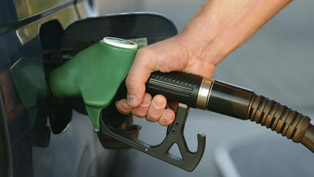Keeping Your Car's Fluid Levels Topped Off

Maintaining the proper fluid levels in your car is an easy task. You may prefer that your local dealer or service center perform this for you but knowing how to do it yourself is a good thing too. For those that are in the DIY category, this guide can help you.
We will discuss the following automotive systems involving fluid levels:
- Engine coolant
- Engine oil
- Automatic transmission fluid
- Window washer fluid
- Brake fluid
- Power Steering fluid
Let's look at them one by one.
Engine Coolant – The engine coolant reservoir is a plastic container under the hood usually just to the side of the radiator. This is where overflow coolant goes when the fluid expands with heat. Pop the coolant lid open and, if its low, fill it about two-thirds of the way full with anti-freeze. Note: Engine coolant is generally diluted 50/50 (50 percent water, 50 percent coolant).
Engine Oil - Checking your oil level is a simple procedure. With the hood open and propped, locate the dipstick. It sometimes has a brightly colored handle. Remove it and wipe it off. Reinsert it into hole, then slowly remove it again. Can you see the oil level down at the bottom of the stick? It should fall between the two hash marks. If it's below the bottom level, you need to add oil -typically a quart. Be very careful not to overfill it, as this can cause over-pressure in the crankcase which may harm internal seals and gaskets.
Automatic Transmission –Generally, the automatic transmission fluid should be checked with the engine running. See your owner's manual for more information on this. The transmission dipstick is often located behind the oil dipstick but doesn't stick up as high. Sometimes it will have the similar colorful markings as the oil dipstick. With the engine running, (be careful!) pull out the transmission dipstick. Wipe it off and reinsert it, then extract it again. It will have high and low marks similar to the oil dipstick. If it's at the low mark, it's time to add some transmission fluid.
Window Washing Fluid - The receptacle is typically located in the engine compartment, underneath the windshield but it may be by the side also. It may look like the coolant overflow reservoir so take a good look with a flashlight if needed. If you're unable to locate these fluid reservoirs, consult your owner's manual. If the fluid is low, add more!
Brake Fluid - Locate the brake fluid reservoir. It's usually in the engine compartment by the fire wall or against one fender. If you can't find it, consult the manual. Remove the lid and check the level. It should be at least two-thirds full. If not, fill to the "full" line with either DOT 3 or DOT 4 brake fluid, check your owner's manual for recommendations on what level of brake fluid is best.
Power Steering Fluid – The reservoirs for power steering fluid can be in a number of location under the hood. Look carefully and you will see it labelled. It will have a plastic measuring post under the cap that registers the fluid level. Be sure and add only approved power steering fluid if it is low.
Maintaining proper fluid levels helps insure safe and trouble-free driving. It takes only a few minutes, and can often catch a problem before it becomes a crisis. Try and make it a habit to check them periodically.







